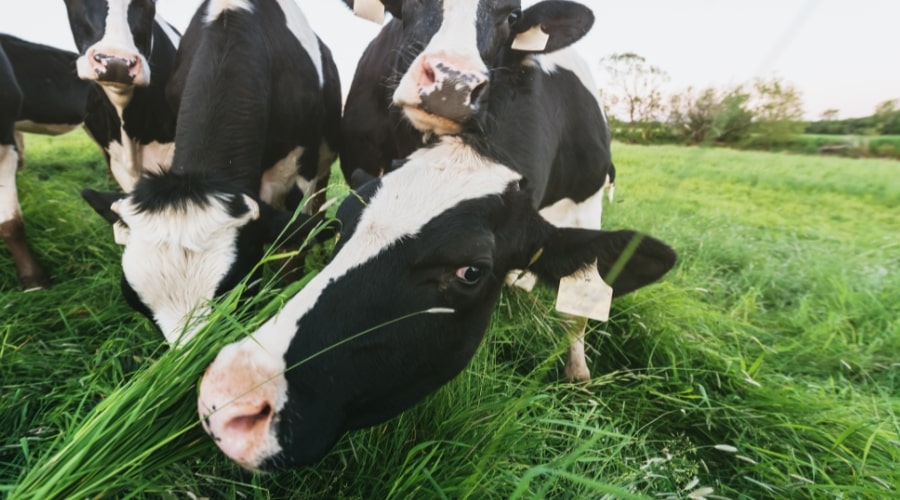Improving milk production on a dairy farm can seem challenging, especially when resources are limited. However, small adjustments in management and resource utilization can have a significant impact. Here are practical strategies to help you scale up milk production effectively.
Optimize Feeding Practices
Nutrition plays a vital role in milk yield. Ensure cows receive a balanced diet tailored to their stage of lactation. For high milk production, include sufficient protein, energy, vitamins, and minerals. High-quality forage, such as alfalfa or silage, combined with grain supplements, supports lactating cows.
Use feed additives like probiotics or bypass fat to boost milk production. These are cost-effective solutions that can enhance feed efficiency. Regularly analyze your feed’s nutritional value and adjust rations as needed. Avoid overfeeding, as it increases costs without additional benefits.
Provide clean, fresh water at all times. Milk is composed of 87% water, so dehydration directly affects yield. On average, a lactating cow drinks 30 to 50 gallons of water daily [TO BE VERIFIED].
Improve Cow Comfort
Stress-free cows produce more milk. Focus on creating a comfortable environment with proper ventilation, temperature control, and clean bedding. Ensure stalls are spacious enough to allow natural movement. Overcrowding leads to stress and reduced milk output.
Establish a consistent milking routine. Cows thrive on regularity, and disruptions can reduce production. Use gentle handling techniques during milking to minimize stress. Invest in milking machines if possible, as they improve efficiency and ensure thorough milk extraction.
Reduce exposure to extreme weather by providing shelters or shaded areas. During winter, ensure barns are warm and draft-free to prevent energy loss in cows.
Focus on Herd Health
Healthy cows produce more milk. Implement a regular vaccination and deworming schedule to prevent diseases. Work with a veterinarian to identify and address herd-specific health risks. Mastitis, for instance, is a common issue that directly lowers milk yield.
Monitor cows closely for signs of illness, such as changes in appetite, weight loss, or reduced activity. Early detection saves money on treatments and avoids production losses. Keep detailed health records to identify recurring problems and address them systematically.
Maintain hoof health by scheduling regular trimming. Lameness reduces feed intake and milk production. Provide dry, non-slippery surfaces to minimize injuries.
Maximize Reproductive Efficiency
Reproductive management directly impacts milk production. Shortening calving intervals ensures cows spend more time in their peak lactation phase. Aim for a calving interval of 12 to 14 months [TO BE VERIFIED].
Use heat detection tools like activity monitors or tail chalking to identify cows in estrus. Timely insemination improves conception rates, keeping your herd productive. Consider using genetically superior bulls or artificial insemination to enhance milk yield in future generations.
Ensure pregnant cows receive proper care and nutrition. Overfeeding or underfeeding during this phase affects both calving outcomes and milk production post-calving.
Efficient Resource Management
Maximizing available resources is key when scaling up with constraints. Use rotational grazing to optimize pasture use. Divide grazing areas into sections and rotate cows to ensure continuous forage growth.
Invest in multi-purpose equipment that serves several functions, reducing the need for multiple machines. Maintain existing equipment to avoid unexpected breakdowns and expenses. Training workers to use resources efficiently can also lower operational costs.
Apply for grants or low-interest loans to fund upgrades like milking machines or feed storage facilities. Many regions offer agricultural subsidies for small-scale dairy farmers [TO BE VERIFIED].
Monitor and Evaluate Performance
Track milk yield daily to identify patterns and issues early. Weigh cows monthly to ensure they maintain a healthy body condition. Use performance data to evaluate the effectiveness of your management strategies.
Invest in herd management software if feasible. These tools help you monitor feeding schedules, health records, and reproductive cycles, making decision-making easier.
Checklist for Improving Milk Production
- Provide balanced, high-quality feed.
- Ensure access to clean, fresh water.
- Maintain a comfortable and stress-free environment.
- Implement regular health and vaccination programs.
- Optimize reproductive management and shorten calving intervals.
- Use resources efficiently, like rotational grazing and multi-purpose equipment.
- Monitor herd performance regularly and make data-driven decisions.
By focusing on these strategies, you can improve milk production without significantly increasing costs. Even with limited resources, consistent effort and attention to detail will lead to measurable improvements.


